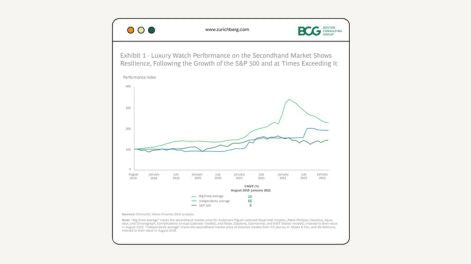A comparison of the different watch glasses
PUntil the late 1920s, wristwatches and watches in general used normal window glass, which required a lockable metal cover. However, in the late 1920s, a transparent substitute for glass was developed using the plastic polymethyl methacrylate (PMMA), commonly known as acrylic. Today, acrylic is used in various industries including handicrafts, medicine, and more, thanks to its valuable properties. In the watch industry, acrylic has been used as a watch glass under names such as Hesalite or Plexiglass. Omega popularized the term "Hesalite glass" in the 1960s with the development of the Moonwatch, and it is now used almost exclusively in the watch industry.

Watches equipped with Hesalite crystal have played a significant role in various historical events. For instance, during the Mount Everest expedition in 1953, Sir Edmund Hillary relied on a Rolex Oyster Perpetual watch with an acrylic crystal. Also, the Omega Speedmaster Moonwatch with reference number ST 105.012, which Buzz Aldrin wore, became the first watch on the moon in 1969. In both cases, Hesalite glass demonstrated its durability. However, Hesalite crystal is not commonly used in diving watches, as its general composition makes it more water-permeable than sapphire glass. Yet, watches with Hesalite glass can be worn daily without any issues, provided that the material thickness and construction are appropriate.
What makes Hesalite glass special?
Compared to sapphire or mineral glass, Hesalite glass has a significantly softer surface structure, which makes it more susceptible to scratches and scuffs. However, it is also more flexible, impact-resistant, and overall much more durable than its counterparts. Although Hesalite glass can get scratched, it cannot break or splinter; at most, it can crack. Additionally, if the surface does get scratched, minor surface damage can be easily polished out.

With proper maintenance and care, Hesalite glass can have the same lifespan as any other type of watch glass. If it does need to be replaced, the cost is significantly lower than for sapphire glass, for instance. Additionally, almost any watchmaker can replace a Hesalite glass. Another notable characteristic of Hesalite glass is that it does not require an anti-reflective coating, unlike other types of glass, meaning that the dial of a watch with Hesalite glass always appears crisp and clear. However, Hesalite glass tends to have a vintage appearance, which some may find appealing, but may not always be in line with the overall aesthetic of the watch.
What about Sapphire and Mineral glass?
Sapphire crystal is a type of glass that is made of crystalline aluminum oxide, commonly known as corundum. Corundum occurs naturally in various colors and is referred to as sapphire, with the exception of red corundum, which is known as ruby.

The synthetic sapphire used for watch glass, like the rubies used in watch movements, is laboratory-made corundum. Its hardness is 10 times stronger than mineral glass and 4 times stronger than acrylic. This makes it the third hardest transparent material in the world, after diamond and Moissanite.

Sapphire crystal is an excellent choice for wristwatches due to its exceptional scratch resistance and shatterproof surface structure. However, it is important to ensure that the watch has anti-reflective sapphire crystal to avoid difficulties with readability caused by the strong refraction of light within the crystal. Some sapphire crystals have a curved structure that not only enhances readability but also provides additional stability. While curvature is not necessary for an anti-reflective coating, it is a useful tip to consider when purchasing a durable timepiece.

The surface structure of sapphire glass is highly resilient due to its tightly-packed crystalline lattice, making it difficult to scratch in everyday use, unless subjected to extreme pressure or contact with diamond. If scratches do appear on the glass, try removing them with a simple eraser first. It's possible that what appear to be scratches are just aluminum residue that can be easily erased with the eraser.

Mineral glass, in contrast, is a variety of glass composed of silicon dioxide, also known as crystal glass. Its chemical structure is akin to that of smoky quartz or rock crystal. Generally, mineral glass is a standard flat glass used for windows. It has a Vickers Hardness of approximately 400 HV if left untreated.

By incorporating various other oxides, the surface of mineral glass can be chemically hardened, resulting in a surface hardness of approximately 900 HV. Moreover, this process significantly reduces the formation of shards in the event of breakage.
Which glass is ultimately better?
Determining which type of watch glass is "better" is likely a matter of personal preference. However, each type has its own unique strengths and weaknesses. Watches with Hesalite glass are durable enough for daily wear and boast properties such as low light reflection and resistance to breakage. Acrylic glass is also less expensive to purchase and maintain than sapphire crystal. On the other hand, sapphire crystal is nearly completely scratch-resistant and has excellent anti-reflective properties. Ultimately, it is up to the individual to decide which type of glass best suits their needs and preferences.



Leave a comment